In this fifth part of the GTK Boxer Story Carl Schulze discusses the main German variants of the 8×8 Multi Role Armoured Vehicle (MRAV) which has now been earmarked for future British Army service as the MIV (Mechanised Infantry Vehicle).
Germany fields four different types of mission modules, namely: Armoured Personnel Carrier, Command Post, Ambulance and Driver Training Vehicle. All modules feature a standardised interface for installation on the Driver module. They also have certain components in common, such as the NBC overpressure protection system and the rear ramp.
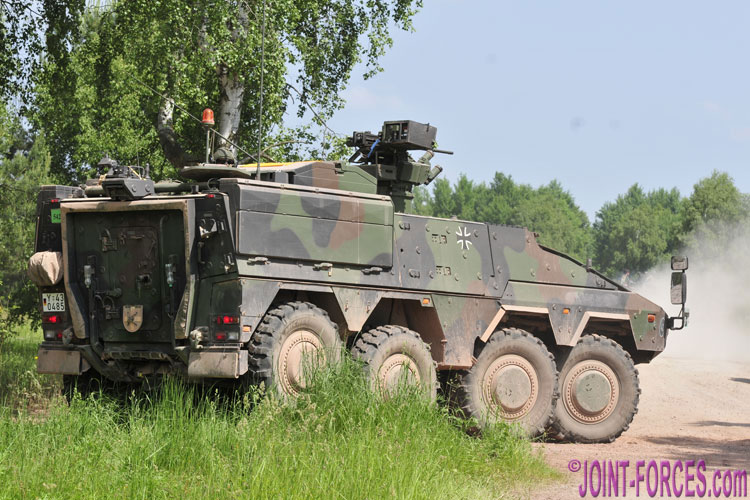
The Command Post Vehicles can be distinguished from the APC by the large box on the roof used to store a tent extension [© CS]
Mission modules consist of one large compartment in which the mission-specific kit is installed. In the case of the Ambulance this features a raised roof, offering more head room and 17.5m³ of protected volume, while the remaining variants feature a protected volume of 14m³.
When configured as the GTK Boxer A1 Gruppen Transport Fahrzeug (i.e. wheeled APC) the vehicle functions as mothership for an entire infantry section, along with their kit. Inside the module the vehicle commander is seated to the front left and the gunner to the front right, on modern adjustable blast protected seats that feature four-point safety harness with integrated airbags in the shoulder straps. In the roof above the commander’s seat a hatch and five panoramic periscopes are installed.
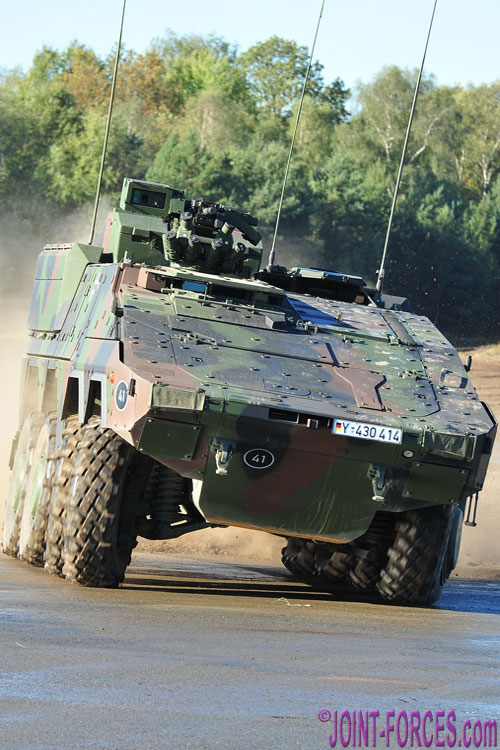
This Boxer Command Post Vehicle was seen at the Ground Operations demo held at Munster in September and October 2013 [© CS]
On the roof above the gunner’s seat the FLW 200 remote controlled weapon station is mounted, fitted either with a 40x53mm Granat Maschinen Waffe (automatic grenade machine gun) or a 12.7x99mm M2HB QCB heavy machine gun. The sensor package of the FLW 200 RCWS includes a high-resolution CCD day camera, a cooled thermal sight and an eye-safe laser rangefinder. The weapon station can be rotated a fully 360° and features an elevation range from -15° to +70°. the RCWS is controlled via a panel situated in front of the gunners seat and a joystick incorporated in the right arm rest of his seat.
To the front of the commander’s seat the multi-function terminal of the Führungs- und Informations system des Heeres and the Integriertes Führungs- und Informations system für Kampftruppen, the command, control and communication (C3) systems, is situated. Other controls available are the ones for operating of the smoke grenade discharger system and various vehicle functions. The communications equipment is installed to the left of the vehicle commander including, among other equipment, SEM 80/90 radios.
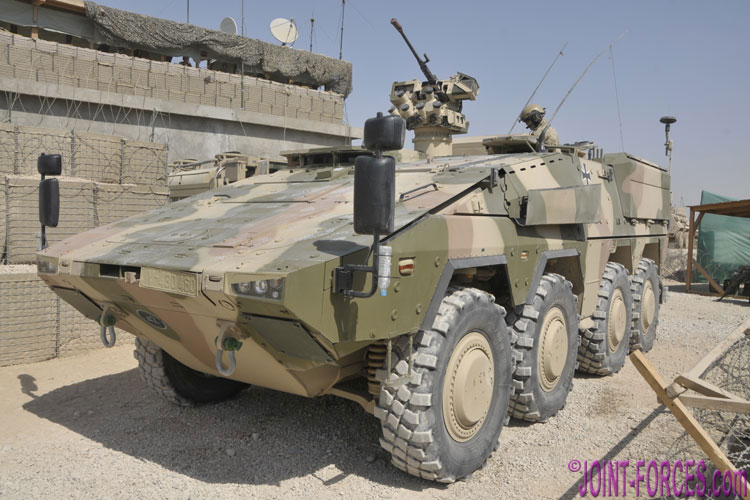
Boxer A1 Command Post Vehicle at a patrol base near Kunduz in 2012 – crewed by five its mission module offers three computer workstations when on the move [© CS]
In the rear fighting compartment four dismounts are seated along the left wall and three along the right. They are facing inwards and are placed on individual, shock absorbing seats that feature an adjustable backrest and headrest, as well as four-point safety harness with integrated air bags in the shoulder straps. Small arms are stored in special mounting brackets between the seats. Storage space for the kit of the soldiers, ammunition and other equipment is situated along the walls behind the backs of the troops. There are also storage racks behind the commander’s and gunner’s seat and nets mounted under the roof are provided for storing combat helmets.

Rear of a GTK Boxer A1 Command Post Vehicle version in detail – note the frame to which the tent extension is usually attached [© CS]
In the roof of the rear fighting compartment four single piece hatches are situated to allow the posting of top cover sentries or for the dismounts to fight mounted. The dimensions of these hatches are much criticised as they are quite small and when wearing body armour with attached ammunition pouches and other kit the manning of them, especially for well-built soldiers, is a nightmare.
The troops leave and enter the vehicle via a large power-operated rear ramp. In this ramp a small hinged door is also available. A terminal with a screen situated to the right rear in the rear fighting compartment increases the situational awareness of the dismounts, as on it the images caught by the cameras of the FLW 200 RCWS can be displayed.

Boxer variants are powered by an easily swapped MTU 8V 199 TE20 V-8 turbocharged, inter-cooled, EURO III compliant, diesel engine that develops 720hp [© CS]
Communication between all crew members is provided by the vehicle intercom system that is linked to the radio systems. Via stations mounted in the rear fighting compartment and available headsets the dismounts also have access to this system. Also installed in the rear fighting compartment is the Störsender CG-12 RCIED electronic counter measure system.
In conclusion, the GTK Boxer MRAV is a highly capable state-of-the-art vehicle that could be employed for many different roles and due to its armour it offers its crew 360° protection from all kinds of threats. Despite its gross vehicle weight of 35,000kg and its size, the vehicle features a high degree of mobility and offers outstanding off-road capabilities.

The Command Post Vehicle has a gross weight of 35,480kg and combat weight of 34,520kg – it is 8,330mm long by 2,990mm wide by 3,390mm high [© CS]
Initially intended as a multi-role armoured vehicle to take over a large number of tasks, over the development period and due to changing operational requirements the vehicle type has become more of an armoured personnel carrier. However, the vehicle is certainly able to fulfil its role as a replacement for the M113 APC and the TPz 1 Fuchs wheeled APC fleet, though some of the latter will remain on-strength and some specialist roles performed by the former will be undertaken by the more recently procured ATF Dingo 2 MRAP (Mine Resistant Ambush Protected) vehicle.
For an album of images of the Boxer Ambulance variant click here.
{ images © Carl Schulze }
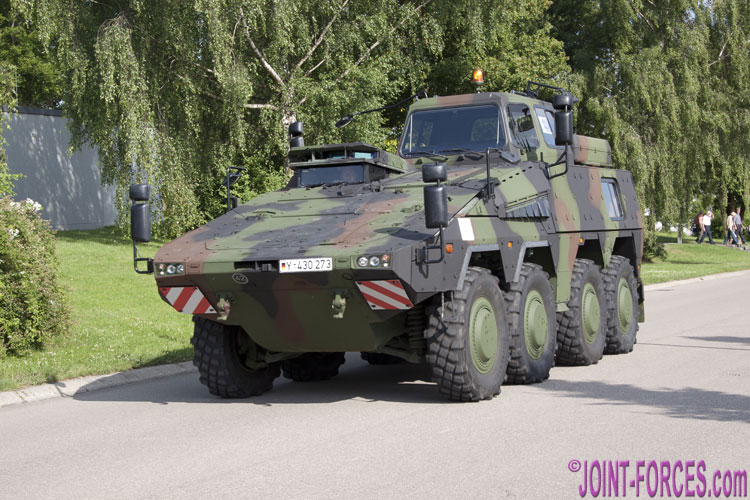
For driver training the Bundeswehr can field ten Fahrschul fahrzeuge variants offering space for the driving instructor and up to four students [© CS]
See also:-


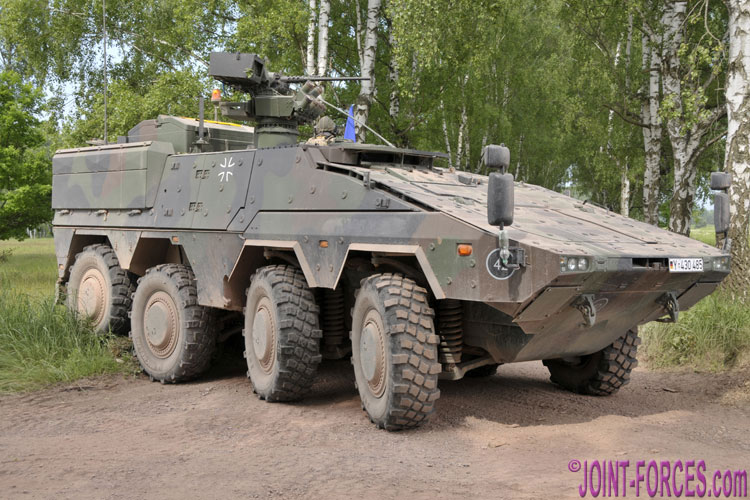




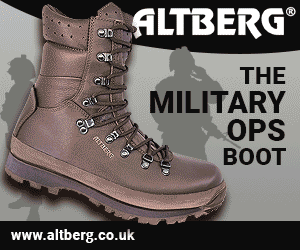
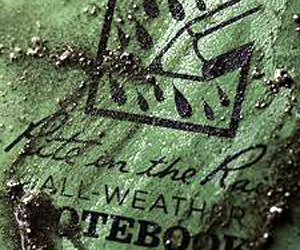



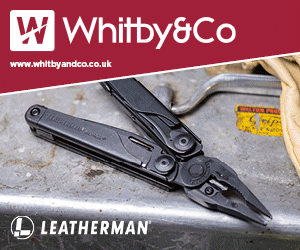
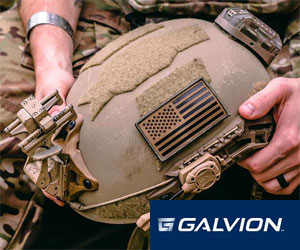
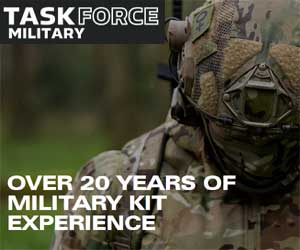




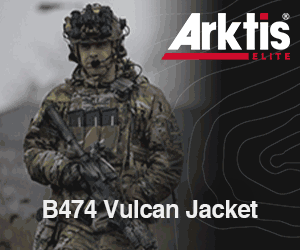

Pingback : Artec Confirms More Than 500 Boxers Ordered By UK - Joint Forces News
Pingback : British Army MIV ~ Boxer Order Finally Placed | Joint Forces News